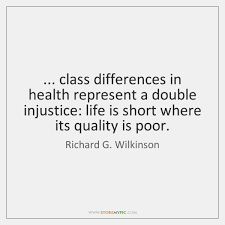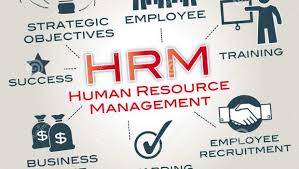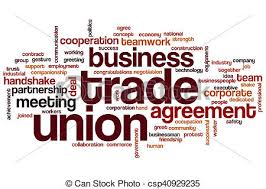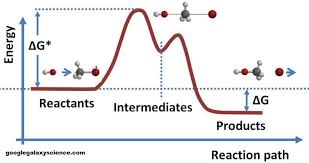
What Are the Social Reasons for Class Differences in Health?
Order Instructions:
In this regard, it would be useful to discuss several different (social) explanations of health inequality that sociologists have put forward to explain health differences on the basis of social class.
Then use some examples to explore class differences in health – you will find empirical examples in the John Germov chapter from ‘John Germov (ed.) 2014, Second opinion, 5th edn, Oxford University Press, South Melbourne’. which you can follow-up the original references, Social Science & Medicine is especially useful for articles on class differences in health and illness.
SAMPLE ANSWER
Social Reasons for Class Differences in Health
What Are the Social Reasons for Class Differences in Health?
Introduction
Health disparity based on class difference is a phenomenon that remains prevalent, despite improvement in health provision over the years. Studies have indicated differences in health aspects among different classes, including life expectancy, maternal and infant mortality as well as the general aspects of health. This result from characteristics within different classes based on wealth, status, employment, background and culture. It can therefore be concluded that an individual’s social class plays an important role in impacting their physical health and access to medical care, which in effect determines their life expectancy. This paper is a discussion of the social reasons surrounding differences in health based on class.
Discussion
Socioeconomic factors
A majority of explanations on health disparities lean towards the socioeconomic or ‘material’ explanation and this has been identified as the major determining factor in health care access among individuals. Researchers argue that poverty, low health resources, poor living standards and housing and high risk occupations among other material factors are responsible for the poor state of health in lower classes. This could explain why life expectancy is significantly different between the rich and poor. Ullits, et al (2015, p. 2) note that people in lower socioeconomic quartiles often experience greater levels of health problems. They are not in a position to access regular health care and when they do, it is often of lower quality. Pais (2014, p. 1732-33) also notes that children from low income households are more likely to accumulate adverse health conditions as they grow older; thus leading to lower life expectancy. This is unlike children from richer backgrounds who have access to quality health, including regular check-ups, access to medication and preventive measures. In a study of social factors influencing TB infection, poverty is rated among the main causes. Infection rate is higher among the poor because they are more likely to live in overcrowded and poorly ventilated areas. In addition, they more disadvantaged as far as accessing health care and treatment are concerned (Hargreaves, et al, 2011, p. 655). Socioeconomic factors therefore influence differences in health based on access to health and quality of health.
Health literacy
Education and health literacy play an important role in health seeking behavior and are therefore considered social health determinants. The higher the level of education, the more an individual is capable of making decisions about their health and this consequently influence their well-being. Educated people are more likely to have knowledge on various issues as well as diseases and thus able to determine when they need to seek medical intervention (Prins, E, & Mooney, 2014, p. 25). They are also more aware of health risks that could affect them and are therefore more likely to take preventive measures, compared to their uneducated counterparts. The level of education also determines an individual’s socioeconomic level, mostly because employment and wages are based on the level of education. This means that individuals with lower levels of education are less likely to have well-paying jobs, adequate to cater for their health needs, unlike educated individuals who are likely to have white collar jobs. Burgard and Lin (2013, p. 1108)makes the same observation, noting that the lower class citizens often have less education and thus undertake jobs that have little or no health benefits. Such jobs are also likely to be more risky, hence exposing them to injuries. This differs from middle and higher class individuals who are more likely to enjoy medical insurance for themselves and their families; hence creating a significant difference in health status.
Health literacy differs across social classes and demographics as identified by Prins and Mooney (2014, p. 27). Based on income, groups earning lower income have low health literacy (LHL) compared to higher income earners. Adults with high school education and above have better health literacy than those with education below high school. In terms of race and ethnicity, minority groups are known to have significantly lower health literacy skills compared to whites. Age also determines literacy level and research indicates that adults aged 65 and above have lower health literacy than younger individuals. These demographic characteristics signify that health differences are largely influenced by social factors. This in turn influences health seeking behavior, in that, the higher the health literacy, the more likely an individual is likely to identify disease signs, seek treatment or take preventive measures. In essence, the quality of life and health status would depend on an individual’s health literacy level and the various demographic factors play a major role in determining health literacy (Prins and Mooney, 2014, p. 25-27).
Cultural factors
Cultural differences are also associated with health variation. Khanna, Kaushik and Kaur (2012, p. 50-51) individuals in lower classes may have preference for less healthy lifestyles and are likely to eat more unhealthy foods and exercise less as opposed to those in high and middle class. This may be attributed to lack of enough money to buy healthy food or due to lack of knowledge on healthy living. Khanna, Kaushik and Kaur (2012, p. 50) in another view explain that people who work in offices are more likely to suffer from lifestyle diseases because of their inactive lifestyles. Their schedule revolves around reporting to work early in the morning, working while seated most of the day and going home in the evening to rest. Despite eating during the day and at night, they rarely have enough time to exercise. In addition, they are more likely to eat unhealthy because they barely have time to cook, such that they turn to fast food for quick meals.
Nature of employment
A closer look at forms of employment indicates that working conditions contribute to disparities in health. Burgard and Lin (2013, p. 1107) notes that social factors within the work environment may influence exposure to various health risks and thus disparities in health. These may include both physical and psychosocial factors. Physical risks including exposure to harmful radiation, heights, dangerous machines and poisonous chemicals for example, means that, an individual is more likely to face a health risk. On the other hand, individuals working in offices have less exposure to occupational risks, giving them an upper hand in terms of health. Depending on the working conditions, employees may benefit from various types of benefits at work, such as medical cover. This means that individuals with high status job benefits are more likely to access quality medical care than those working in poor employment backgrounds (Burgard and Lin, 2013, p. 1112). Lastly, psychosocial factors including stress at work and perceived job insecurity among others may affect an individual’s health status. People in more secure jobs are known to have lower stress levels as opposed to individuals with low job security, hence better mental stability.
Social status
Status and power are a major cause of health inequity. Ullits, et al (2015, p. 4) argue that depending on one’s position in the society, the availability of health services is likely to differ. Individuals who are highly placed in the society are likely to access better health services than those in lower ranks or ordinary citizens because they are more likely to command respect in any setting in the society and are more likely to be endowed financially. This however goes beyond availability of money because a highly placed individual can easily access health services during an emergency, with the promise of paying later; yet an individual with no status in the society may find it difficult to access health care without finances. The possibility of a highly placed individual finding sponsors, to supplement hospital bills is also higher than for a person who is barely known. This explains why people with higher social status can afford to seek the highest level of medical care, even travelling abroad to treat chronic diseases which would otherwise kill a common citizen due to lack of finances and quality health care.
Minority status
It is generally observable that race and ethnicity can influence the access to quality health. Shepherd and Zubrick (2012, p. 108) note that minority groups tend to access lower quality health than native citizens, mostly because of lower income levels and low levels of education. Collins and Rocco (2014, p. 5-8) note that health disparities based on race are mostly influenced by labor force participation differences influenced by racial differences. These health differences are further exhibited by the association between employment and health. While low income restricts an individual’s access to quality health, low levels of education mean that an individual has low health literacy level and thus less likely to maintain health seeking behavior.
The disabled as a minority group, are considered to have higher health risks than normal individuals; a factor that creates a health difference between these groups. They are more prone to accidents and falls and this is particularly risky if they do not have an assistant. The fact that a disabled individual may not be able to go to a hospital unassisted also means that they are more disadvantaged, especially in emergency situations. Delays in accessing health care while waiting for a caregiver or assistant puts disabled persons at a higher health risk. In addition, most disabled individuals are not in a position to work or find employment in high level jobs, thus limiting their ability to obtain quality health services.
Gender differences
Gender is a health determinant and research has shown that males and females are exposed to different health risks. Men are known to take up more risky professions than women and this exposes them to a greater variety of health problems. Women on the other hand are more prone to psychological health factors than men, despite having a longer life expectancy (Malmusi, et al (2014, p. 1). The life expectancy among men may be influenced by biological differences, risk-taking behavior and health seeking behavior. In their research, Malmusi, et al (2014, p. 4) establish that women are disadvantaged in terms of access to the labor market and often end up with lower income than their male counterparts. This to a large extent explains inequality among genders in terms of health. It is also notable that different ailments are likely to affect one gender compared to the other, thus creating health differences. While women may be more prone to breast cancer for example, men have a lower risk and hence this is a major difference in health.
Environmental factors
The environment in which an individual lives, including their neighborhood can influence their health significantly. This explains why individuals living in deprived neighborhoods such as slums are likely to encounter more health risks than those living in up market residential areas. Hargreaves, et al (2011, p. 656) for example note that population density in congested urban residents to a significant extent exposes residents to higher risk of contracting tuberculosis. Bac, Andersen and Dokkedal (2015, p. 317) introduce the concept of self-rated health and study the role played by individuals’ neighborhoods in determining their self-rated health. The study which focuses on deprived neighborhoods concludes that individuals living in rural settings reported higher self-rated health position than those living in deprived neighborhoods in urban settings.
Conclusion
This discussion establishes that social class is directly correlated with health differences in the society. Socioeconomic class differences appear to take a central role in determining access to health, information and preventive measures. This is is because access to health, including quality health is determined by a prrson’s ability to pay. The rich are therefore likely to access better health services than the poor. Other parameters influence access to health including social class differences brought about by culture, race and ethnicity, age, gender, social status, education and health literacy and employment background among other factors. Each social factor is associated with a certain level of health disparity in terms of access, knowledge in health matters and quality of health individuals in a certain class can acquire. Despite government attempts to equate health care access, there will always be differences pegged on social class. It can therefore be concluded that social class plays an imperative role in explaining health disparities.
Reference List
Bak, C, Andersen, P, & Dokkedal, U 2015, ‘The association between social position and self-rated health in 10 deprived neighbourhoods’, BMC Public Health, 15, 1, pp. 512-527, Academic Search Premier, EBSCOhost, viewed 29 September 2015. http://eds.a.ebscohost.com/ehost/pdfviewer/pdfviewer?sid=866206dd-5a91-4e8b-83e1-985a5694b33a%40sessionmgr4005&vid=0&hid=4202
Burgard, S, & Lin, K 2013, ‘Bad Jobs, Bad Health? How Work and Working Conditions Contribute to Health Disparities’, American Behavioral Scientist, 57, 8, pp. 1105-1127, Professional Development Collection, EBSCOhost, viewed 29 September 2015. http://eds.a.ebscohost.com/ehost/detail/detail?sid=d89bc410-425d-4eae-93ba-
Collins, J, & Rocco, T 2014, ‘Disparities in Healthcare for Racial, Ethnic, and Sexual Minorities’, New Directions For Adult & Continuing Education, 2014, 142, pp. 5-14, Professional Development Collection, EBSCOhost, viewed 29 September 2015. http://eds.a.ebscohost.com/ehost/pdfviewer/pdfviewer?sid=1541d2f5-4ce2-47e4-bb90-df366b6ef5d3%40sessionmgr4004&vid=0&hid=4202db71ff3dea91%40sessionmgr4001&vid=0&hid=4202&bdata=JnNpdGU9ZWhvc3QtbGl2ZQ%3d%3d#AN=89022875&db=tfh
Hargreaves, J, Boccia, D, Evans, C, Adato, M, Petticrew, M, & Porter, J 2011, ‘The Social Determinants of Tuberculosis: From Evidence to Action’, American Journal Of Public Health, 101, 4, pp. 654-662, Professional Development Collection, EBSCOhost, viewed 29 September 2015.
Khanna, P, Kaushik, R, & Kaur, G, 2012, ‘Changing Dietary Pattern and Lifestyle on Diseases’, Asian Journal of Multidimensional Research, 1, 6, pp. 49-54, November 2012. http://www.tarj.in/images/download/ajmr/AJMR%20NOVEMBER%202012%20COMPLETE%20-%20PDF/11.6%20Poonam%20Khanna.pdf
Malmusi, D, Vives, A, Benach, J, & Borrell, C 2014, ‘Gender inequalities in health: exploring the contribution of living conditions in the intersection of social class’, Global Health Action, 7, pp. 1-9, Academic Search Premier, EBSCOhost, viewed 29 September 2015. http://eds.a.ebscohost.com/ehost/pdfviewer/pdfviewer?sid=44782511-132d-418c-933a-6f4696e21a68%40sessionmgr4004&vid=0&hid=4202
Pais, J 2014, ‘Cumulative Structural Disadvantage and Racial Health Disparities: The Pathways of Childhood Socioeconomic Influence’, Demography, 51, 5, pp. 1729-1753, Business Source Complete, EBSCOhost, viewed 29 September 2015. http://eds.a.ebscohost.com/ehost/pdfviewer/pdfviewer?sid=1dbaad58-c6d9-4171-82e7-1aed824ab8d0%40sessionmgr4003&vid=0&hid=4202
Prins, E, & Mooney, A 2014, ‘Literacy and Health Disparities’, New Directions For Adult & Continuing Education, 2014, 142, pp. 25-35, Professional Development Collection, EBSCOhost, viewed 29 September 2015. http://eds.a.ebscohost.com/ehost/pdfviewer/pdfviewer?sid=94427437-8341-4618-8514-e25408a4b4d9%40sessionmgr4004&vid=0&hid=4202
Shepherd, C, Li, J, & Zubrick, S 2012, ‘Social Gradients in the Health of Indigenous Australians’, American Journal Of Public Health, 102, 1, pp. 107-117, Professional Development Collection, EBSCOhost, viewed 29 September 2015. http://eds.a.ebscohost.com/ehost/pdfviewer/pdfviewer?sid=2caa4afc-e08a-4ee4-a9a0-ae90500e78eb%40sessionmgr4005&vid=0&hid=4202
Ullits, L, Ejlskov, L, Mortensen, R, Hansen, S, Kræmer, S, Vardinghus-Nielsen, H, Fonager, K, Bøggild, H, Torp-Pedersen, C, & Overgaard, C 2015, ‘Socioeconomic inequality and mortality – a regional Danish cohort study’, BMC Public Health, 15, 1, pp. 1-9, Academic Search Premier, EBSCOhost, viewed 29 September 2015. http://eds.a.ebscohost.com/ehost/pdfviewer/pdfviewer?sid=c640013f-8c94-4be4-a8fb-1689a2fc793b%40sessionmgr4004&vid=0&hid=4202
We can write this or a similar paper for you! Simply fill the order form!












